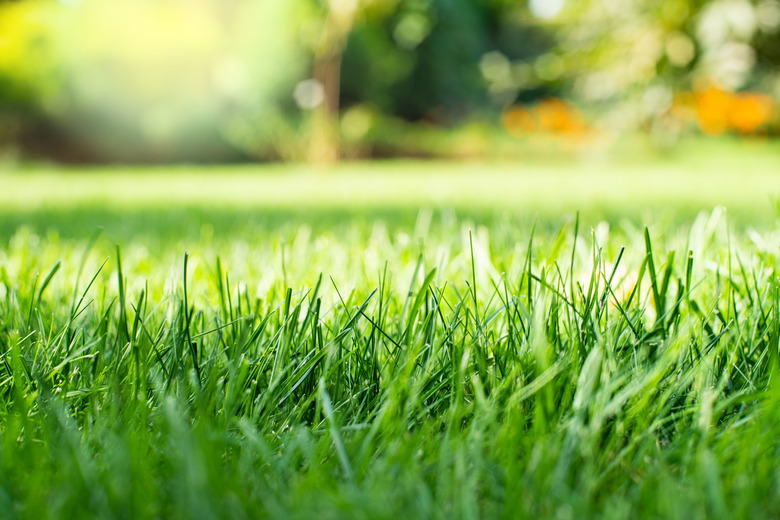How Many Blades Of Grass Are In A Square Foot?
The race for free 160-acre homesteads on the Cheyenne and Arapaho reservations in Oklahoma began at noon on April 19, 1892. Big Tree, the Kiowa chief, looking over the mass of humanity and their various wagons, buckboards and small houses on wheels, remarked that there were "as many people as the blades of grass on the Washita (during the Great Plains Wars) in the spring." While **the Oklahoma Museum of Natural History claims there are roughly 3,000 blades of grass in a square foot,** that's a lot of settlers looking for free land!
That estimate of 3,000 blades per square foot was confirmed by students at Jack Abrams STEM Magnet School and reported by Huntington Public Schools, but it depends on the type of grass. The children calculated that there were 12 to 93 blades in a square inch, when the soil consists of 70 percent grass and 30 percent dirt. Although 144 square inches in a foot equals 3,000 blades in a square foot, that estimate must take into consideration the type of grass being measured.
Another calculation by Creation Design determines that **1 square foot of zoysia grass contains roughly 2,000 blades of grass,** when hand counted. Other calculations result in a difference in the number of blades of grass in a square foot.
Count the number of blades in your own lawn by counting the number of blades in a 3-inch square and multiply that number by 16 to determine the number of blades in each square foot of your lawn.
Types of Grass
One-third of the earth's surface is covered by more than 11,000 grass species, from bamboo to corn to sugar cane, according to UCLA's Newsroom.
Lawn grass consists of several species, with blade widths ranging from 1/16 inch wide in creeping bentgrass (Agrostis stolonifera) and fine fescue (Festuca spp) to 1/4-inch-wide perennial ryegrass (Lolium perenne). This difference in blade width accounts for the difference in the reported number of blades of grass in a square foot.
Tip
A square foot of grass contains thousands of blades of grass, with that number varying depending on the species, location and leaf size of that grass.
Location Determines Number of Blades of Grass
Leaf size is an important factor in determining how grass adapts to its environment. Researchers at UCLA, with funding supplied by the National Science Foundation, discovered that smaller grass blades were dominant in arid and cold environments.
Large-leafed species did not acclimate to hot and dry climates. Both leaf sizes resulted in a difference in the number of blades per square foot; however, the adjustment in number isn't radical.
Benefits of Numerous Blades of Grass
Climate change is a fact of life and, as excessive carbon (CO2) accumulates in the air, the result is like a blanket covering our earth, smothering it, according to Oregon State University. The result: increases in the average temperatures, rainfall and severe weather events.
Surfaces such as asphalt and concrete increase air temperature, while grass reduces daytime temperatures. Planting lawns results in the grasses pulling carbon from the air and routing it to the blades and root systems. Hence, having more square feet of grass improves the ecosystem and reduces the effects of climate change. Walt Whitman would be impressed!
